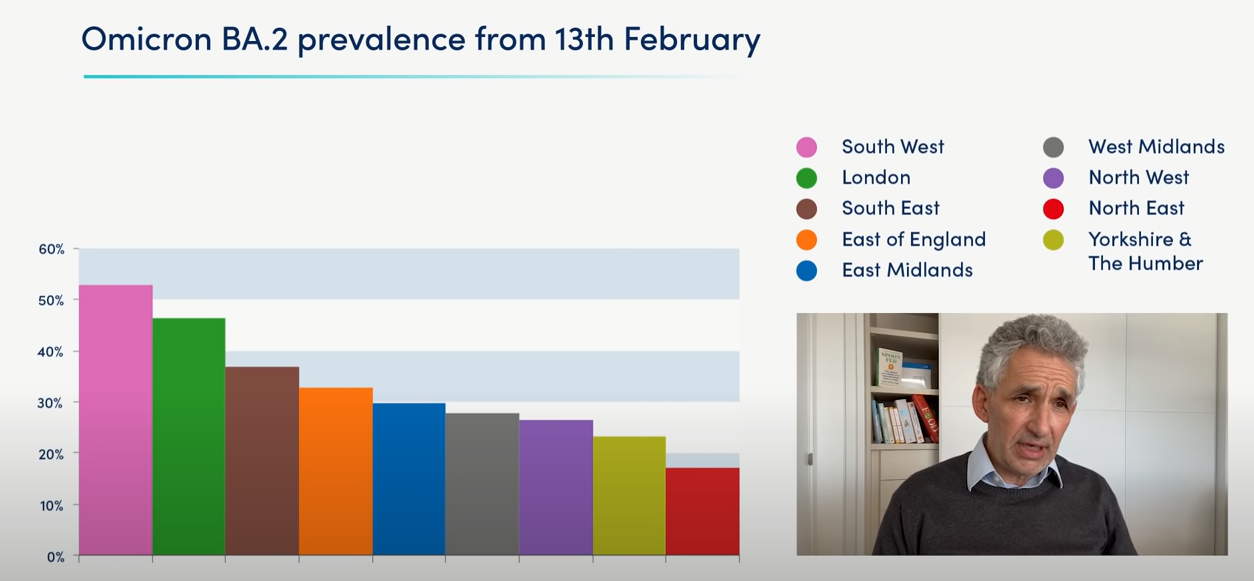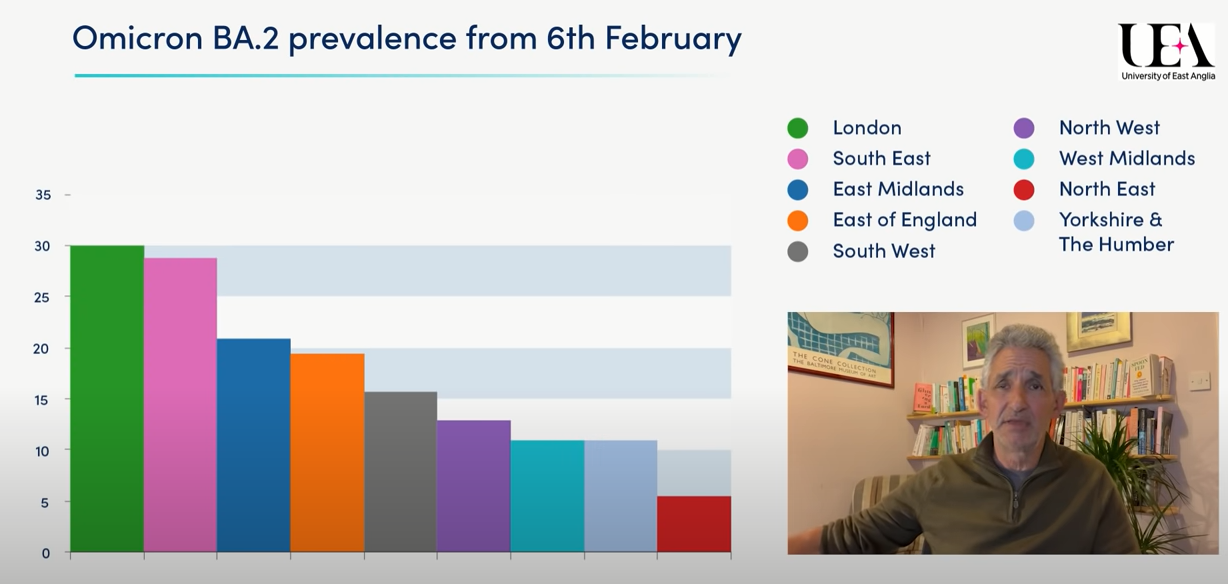A NEW coronavirus hotspot has emerged in the UK as cases of Omicron’s ‘stealth sister’ continue to grow.
Infections have fallen across the country in recent weeks and have plummeted by 40 per cent in the last fortnight.


Omicron BA.1 is the dominant strain in the UK, but its sister strain is now also spreading.
It is known as BA.2, and has many of the same mutations as original Omicron – with current case rates still low in comparison.
A string of positive studies show Omicron is milder than other strains in the vaccinated – with vaccines thought to still be effective against this new variant, BA.2.
The latest data from UKHSA found it appears to be able to spread faster than original Omicron.
Data from the experts at University of East Anglia has shown how the cases are spreading across the UK.
The charts show that cases are the highest in the South West of the country as it seemingly spreads over from London.
Professor Tim Spector, head of the ZOE Symptom Tracker app, said the graphs show that in the South West, the percentage of cases is above 50 per cent.
“In the North East it’s about 20 per cent, so a pretty big difference depending on where you live, mainly South to North and that is likely to change.
“We are still finding out about BA.2 and what we do know is that its doubling time sees around every seven or eight days and its infecting a third of the population at the moment,
“We believe its advantage is because it has a shorter incubation period. A subtle difference in that can make a big difference in how infectious it is in sweeping through households”.
While most people who catch Omicron are suffering from cold-like symptoms, Prof Spector said people should continue to isolate for five days once rules are changed later this month.
Prime Minister Boris Johnson previously said that isolation would be changed from seven to five days and is now looking to scrap this altogether.
The PM will ditch the quarantine requirement at the end of February – a full month before it was originally earmarked to lapse on March 24.
Downing Street hailed the super vaccine rollout for letting England throw off the restraints early and get back to normal.
He’s set to unveil the plan on Monday, but Prof Spector said that people who have symptoms, such as a cough or a sore throat and who test positive, should still isolate.
“It will be interesting to see what the Prime Minister’s “Living with Covid” announcement will include.
“Whilst I agree we have to learn to live with Covid, and hospital and ICU admissions are very low, the ZOE data doesn’t yet suggest that we’ve entered a stable or endemic phase”, he said.
Prof Spector added that it’s very likely that there are more variants on the horizon with unpredictable properties.
He added: “When the mandates are lifted, to protect others, my advice is we should all still be self isolating for five days from first new symptoms, when infectiousness is high, and tell others to do the same.
“For individual protection, wearing a high quality FFP2 or FFP3 mask is your best way to reduce risk.”






